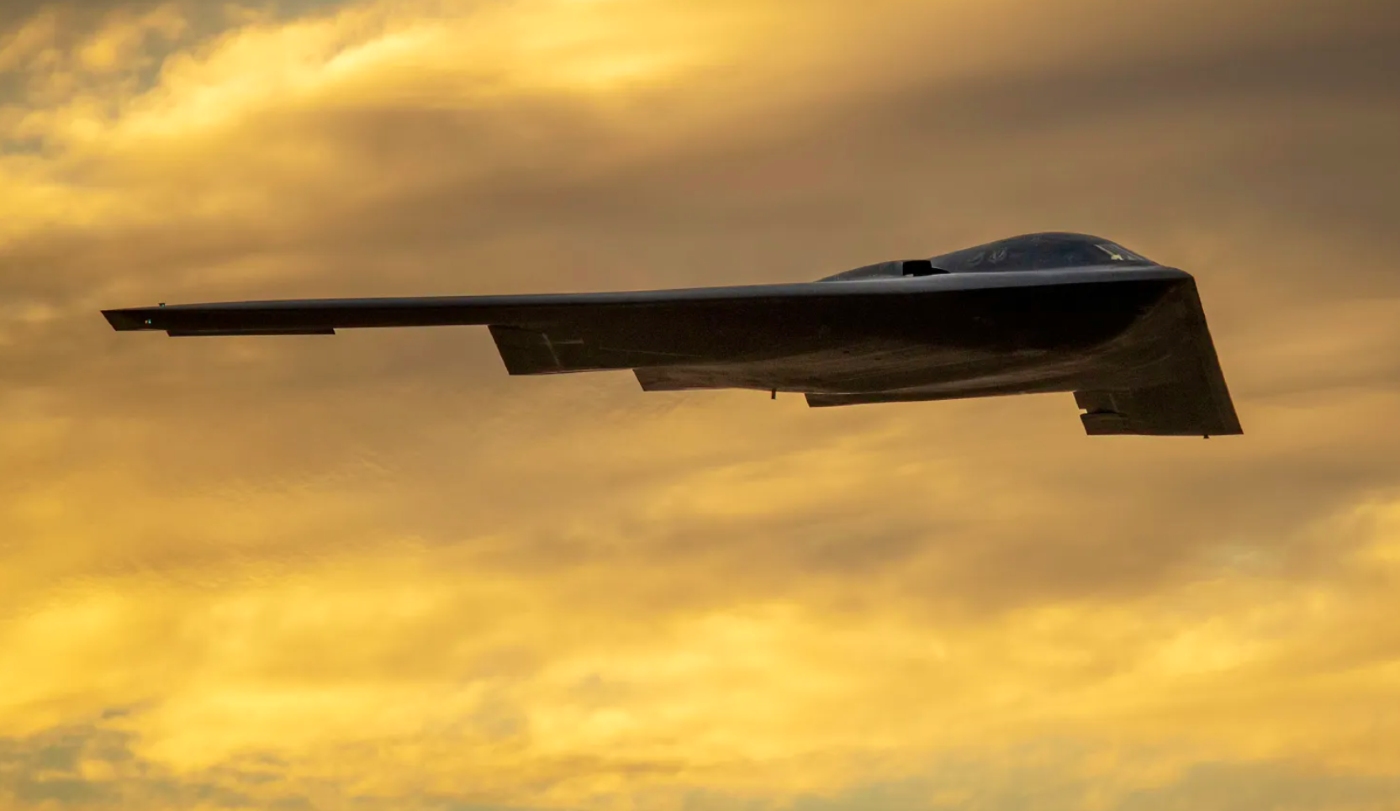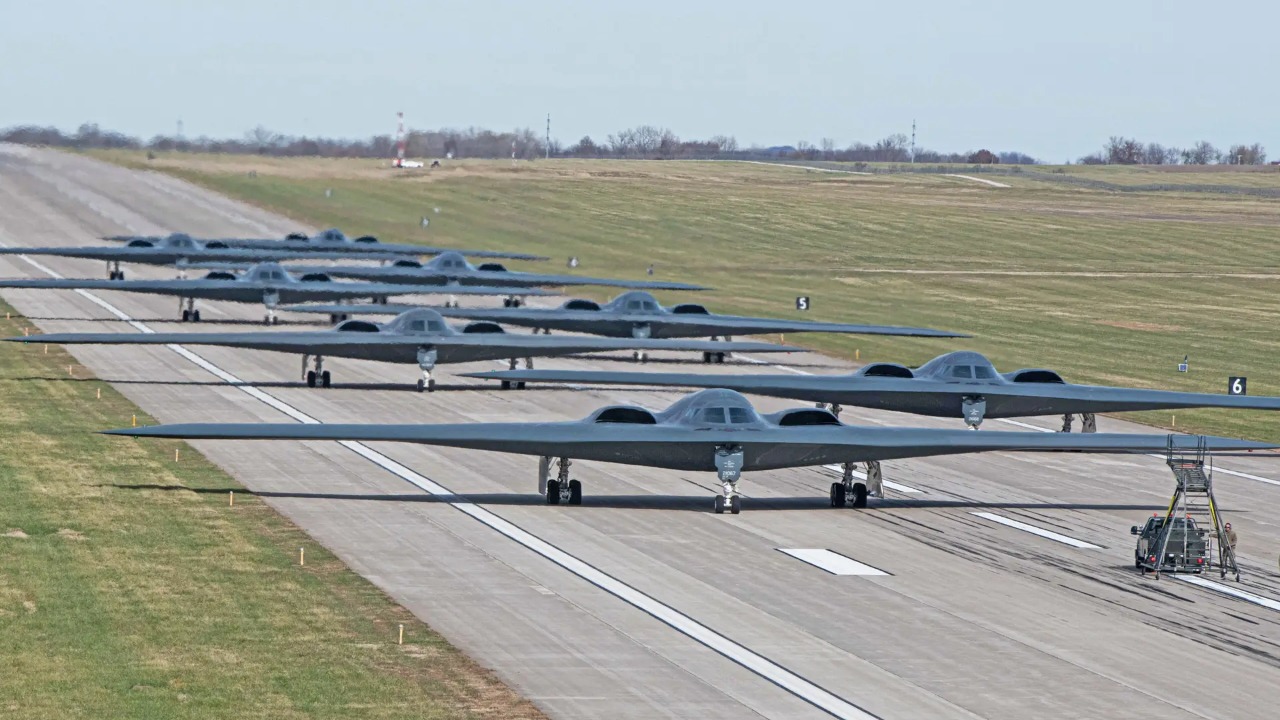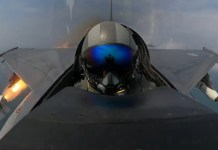In a move that’s turning heads across the Indo-Pacific, the U.S. Air Force has quietly slipped its most formidable aircraft back into the region. For the first time since 2019, B-2 Spirit stealth bombers have touched down on the island of Guam, sending a strong message to regional adversaries.
These bat-winged behemoths, each worth a staggering $1.157 billion (fiscal 1998 constant dollars), aren’t just any planes. They’re the pinnacle of American aerospace engineering, capable of delivering both conventional and nuclear payloads while remaining virtually invisible to radars.
B2 Bombers Deployed To Guam
The US Air Force has deployed B-2 stealth bombers close to China for the first time in five years. Multiple B-2s flew to the Pacific for a joint exercise around Guam, Palau, and the Northern Mariana Islands.
Three B-2 Spirit bombers from Whiteman Air Force Base, Missouri, landed in Guam to participate in ‘Valiant Shield 24’, marking the first B-2 deployment to Guam since 2019.
Images released show the B-2s flying with Marine Corps F-35Bs and landing at Andersen Air Force Base on June 13. The exercise concluded on June 18. Previously, B-2s were seen in Europe in 2023 and Australia in 2022 for Bomber Task Force missions.
The Pacific Air Forces or Whiteman Air Force Base have not disclosed the specific nature of the missions and training exercises involving the B-2s during Exercise Valiant Shield.
A U.S. military statement highlighted the importance of deploying the B-2 Spirit in the exercise: “The speed, flexibility, and readiness of our strategic bombers are crucial in deterring potential threats and demonstrating unwavering support for our allies and partners.”
The timing of this deployment is no coincidence. As China and North Korea flex their muscles, the U.S. is responding with power projection.
US Responds To Chinese Assertiveness
Defense analysts view the recent deployment as the United States’ response to China’s growing assertiveness in the South China Sea and broader Indo-Pacific region. Despite international criticism and calls for action, China continues to employ belligerent tactics, viewing them as extensions of its national influence.
The locations selected for B-2 operations are strategically positioned to ensure versatile and effective global strike capabilities.
Andersen Air Force Base serves as a key hub for operations in Asia and the Pacific, while NSF Diego Garcia provides access to the Middle East and Africa, and RAF Fairford supports operations across Europe, Africa, and the Middle East.
Operational since the 1940s, Andersen AFB has supported Strategic Air Command operations and served as a forward base during WWII. It continues to support strategic operations in Asia and the South Pacific.
Post-WWII, many Pacific airfields closed, with the 19th Bomb Group at North Field being the only bombardment unit. Permanent structures were built in 1946, and the base was renamed Andersen AFB in 1949. During the Korean War, Andersen played an administrative and logistical role, later supporting bomber and aerial refueling units on rotational deployments from the U.S.
Today, Andersen AFB, with its extensive fuel and munitions storage and dual runways, serves as a critical logistics support center for contingency forces in the southwest Pacific and Indian Ocean.
Although there has been no publicly acknowledged visit of a B-2 Spirit to Guam since 2019, Andersen AFB remains among the three strategically positioned bases outside the continental United States fully equipped to support the stealth bomber’s specialized needs. Moreover, leveraging the U.S. Air Force’s extensive aerial refueling capabilities, B-2s regularly conduct long-range strike missions directly from Whiteman Air Force Base.

B-2 Spirit: Cornerstone Of US Stealth Technology
For three decades, the B-2 Spirit, built by Northrop Grumman, has been a cornerstone of stealth technology for the U.S. Air Force. It remains the only long-range penetrating bomber in the U.S. arsenal, combining nuclear and conventional capabilities with stealth, long-range strike, heavy payload, and precision weaponry, making it a formidable deterrent. Its low-observable technology allows it to evade the most advanced air defenses at all altitudes during missions.
The B-2 is powered by four General Electric F118-GE-100 turbofans, each providing 17,300 lbs of thrust. These turbofans enable speeds of Mach 0.95 and a range of over 6,000 nautical miles without refueling. Operated by a crew of two (a pilot and a mission commander), the aircraft boasts a wingspan of 172 feet, a length of 69 feet, and a height of 17 feet. It can reach high subsonic speeds and has a combat ceiling of 50,000 feet. With refueling, its range extends to 10,000 nautical miles.
The B-2 can carry a payload exceeding 40,000 lbs and has a maximum gross takeoff weight of 336,500 lbs, allowing it to engage a wide range of targets, from hardened bunkers to mobile enemy units. Its unique design integrates subsystems into a sleek, low-observable airframe with reduced acoustic, infrared, visual, and radar signatures, making it one of the most survivable aircraft in the world.
Equipped with advanced avionics and equipment, the B-2 features a digital electronic flight control system that automatically stabilizes the aircraft and a GPS-Aided Targeting System (GATS) that uses GPS to direct munitions to their targets. Its comprehensive array of sensors, including a radar warning receiver, a defensive aids system, and a forward-looking infrared sensor, provide enhanced situational awareness and survivability.
The B-2 fleet faced operational setbacks in the first half of last year due to an incident involving one of the bombers at Whiteman in December 2022, leading to their grounding. Consequently, B-2 Spirit deployments were limited throughout 2023, although they did conduct operations in Europe during the latter part of the year. The last deployment of B-2s to the Indo-Pacific was in June 2022 for a mission in Australia as part of a Bomber Task Force (BTF).
The B-2 holds the title of the world’s most expensive combat aircraft, with some reports claiming it to have a staggering price tag of $4.04 billion, according to 2023 estimates. The decision to reduce production from the initial plan of 120 aircraft is primarily due to the high operational costs and extensive maintenance requirements.

US Strategic Initiatives In Palau & Australia
The United States is considering permanently deploying its advanced Patriot air defense systems in Palau, a Pacific island nation, as part of its efforts to counteract China’s growing influence in the region.
Situated strategically between the U.S. territory of Guam and the Philippines, Palau has become increasingly vital as a key partner for the U.S. military.
In line with this strategic imperative, the United States has begun installing over-the-horizon radar systems in Palau by 2026. These systems aim to enhance air and maritime situational awareness across the region to benefit U.S. forces.
Palau, as an independent nation, maintains a longstanding and robust relationship with the United States under the 1994 Compacts of Free Association (COFA) agreement, which governs their military cooperation. Over the years, the U.S. military has extensively utilized Palau’s islands for various military exercises.
Simultaneously, in October-November 2023, the United States bolstered its Air Force presence in Australia to counter China’s assertiveness in the Indo-Pacific. Under the Enhanced Air Cooperation (EAC) agreement, the U.S. allocated funds for constructing a new fuel station at Royal Australian Air Force (RAAF) Base Darwin in northern Australia.
This US$270-million project includes a fuel storage facility with a capacity of 300 million liters, marking it as the largest purpose-built storage facility in northern Australia. This facility supplements two recently constructed fuel storage tanks at the base.
Australia has significantly ramped up its collaboration with the United States, particularly amid ongoing tensions with China. The initiative emphasizes infrastructure upgrades across northern military bases, encompassing enhancements to runway and apron capacity, fuel storage and distribution, accommodations, and security measures.
Proposed Combined Maritime Forces In Indo-Pacific
Meanwhile, in the vast expanse of the Pacific, a new idea is gaining traction: a Combined Maritime Forces structure. This proposed framework isn’t about military might but rather about tackling shared challenges.
Some defense experts propose establishing a combined maritime forces structure in the Indo-Pacific to systematically address critical issues. However, the region currently lacks a unified framework.
Creating such a force focused on maritime law enforcement rather than military competition offers a non-escalator approach. This initiative aims to tackle challenges such as illegal fishing, aligning with broader objectives of sustainability and maritime security.
A Combined Maritime Forces organization would serve as a platform for enhanced cooperation, resource allocation, and coordinated responses to regional challenges. Beyond law enforcement, it could facilitate joint efforts in responding to environmental disasters and humanitarian crises.
It reminds us that in this complex region, security isn’t just about bombers and missiles—it’s also about sustainability and cooperation.
In conclusion, the deployment of the B-2 Spirit stealth bombers underscores U.S. commitment to the Indo-Pacific region. As these formidable aircraft cast their imposing shadows over Guam’s runways, they symbolize a new chapter in the intricate story of US-China relations in the Pacific.
In this high-stakes game of deterrence and diplomacy, the B-2s’ arrival marks not an endpoint but rather a continuation of an ongoing dialogue written in the language of strategic deployments.
Amid simmering tensions and an increasingly complex geopolitical landscape, the presence of the B-2 bombers signals America’s readiness to support its diplomatic efforts with tangible displays of power. Yet, it also invites questions about the future trajectory of US-China relations and the delicate balance of power in the region.
- Shubhangi Palve is a defense and aerospace journalist. Before joining the EurAsian Times, she worked for E.T. Prime. In this capacity, she focused on covering defense strategies and the defense sector from a financial perspective. She offers over 15 years of extensive experience in the media industry, spanning print, electronic, and online domains.
- Contact the author at shubhapalve (at) gmail (dot) com.




